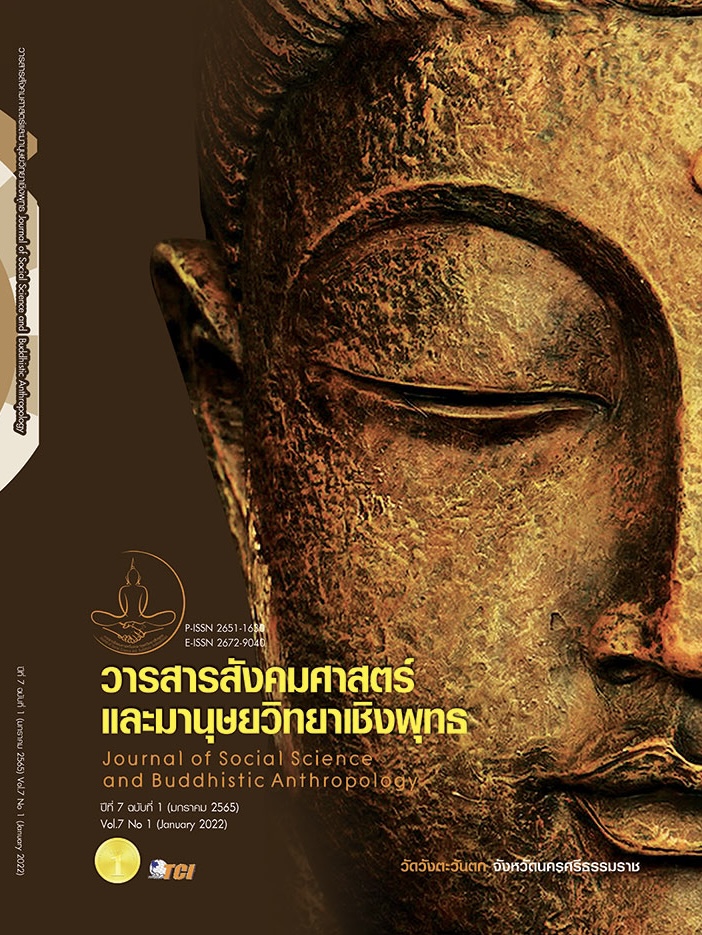A STUDY OF THE CORE COMPETENCIES FACTORS AND INDICATORS OF LEARNERS ON BACHELOR DEGREE OF PHYSICAL EDUCATION UNDER AUTONOMOUS UNIVERSITY
Keywords:
Competency, Learners on Bachelor Degree of Physical Education, Autonomous UniversityAbstract
The objectives of this article were to construct and develop the core competency factors and indicators of learners on bachelor degree of physical education under autonomous university. The research is a mixed method. Data were collected using document synthesis and semi-structured interview from five experts. Content analysis and analytic induction were used for data analysis; the quality evaluation performed the core competency factors and indicators of learners on bachelor degree of physical education under autonomous university. Data were collected using component quality and indicators assessment form and five experts selected by the purposive sampling method. The Questionnaire of the opinions on the quality of components and indicators to consider and verify 3 issues such as 1) the usefulness that will arise from the use of the components and indicators 2) the suitability of the components and indicators with the student groups, and 3) the principle and theory correctness. Data were analyzed by using the median and interquartile range. The results were as follows: The elements and indicators of the core competency factors of learners on bachelor degree of physical education under autonomous university consisted of four elements and forty-eight indicators, including twelve indicators of the knowledge, eighteen indicators of skill, seven indicators of motive and self-concept, and eleven indicators of personality traits. The effect of quality evaluation indicators on the utility, propriety, and accuracy from five experts found that the median was 3.50 and more and the 1.50 and less of interquartile range. Hence, all indicators were qualified and required criteria.
References
จิตติ ชนะฤทธิชัย. (2562). การพัฒนาตัวชี้วัดสมรรถนะการจัดการเรียนรู้พลศึกษาสำหรับนักศึกษาฝึกประสบการณ์วิชาชีพ สาขาวิชาพลศึกษา มหาวิทยาลัยราชภัฎเพื่อรองรับแผนการศึกษาชาติ. ใน ดุษฎีนิพนธ์นิพนธ์การศึกษาดุษฎีบัณฑิต สาขาวิชาสุขศึกษาและพลศึกษา. มหาวิทยาลัยศรีนครินทรวิโรฒ.
เดลินิวส์. (2556). “มศว” จัดฉลอง 100 ปี การพลศึกษาไทย. เรียกใช้เมื่อ 20 มกราคม 2564 จาก https://www.dailynews.co.th/sports/109842
ผู้ทรงคุณวุฒิ. (21 กรกฎาคม 2563). การศึกษาองค์ประกอบและตัวชี้วัดสมรรถนะหลัก ผู้เรียนสาขาวิชาพลศึกษา ระดับปริญญาตรี ในมหาวิทยาลัยกำกับของรัฐ. (พิพัฒน์ ตันวิบูลย์วงศ์, ผู้สัมภาษณ์)
พงษ์เอก สุขใส. (2561). ครูพลศึกษาในศตวรรษที่ 21. วารสารวิชาการมหาวิทยาลัยฟาร์อีสเทอร์น, 12(Supplement), 8 - 21.
พระราชบัญญัติสภาครูและบุคลาการทางการศึกษา พ.ศ. 2546. (2546). ราชกิจจานุเบกษา. เล่ม 120 ตอนที่ 52. หน้า 3-16.
สำนักงานคณะกรรมการการอุดมศึกษา. (2558). เกณฑ์มาตรฐานหลักสูตรระดับปริญญาตรี พ.ศ. 2558. กรุงเทพมหานคร: สำนักงานคณะกรรมการการอุดมศึกษา.
สำนักงานเลขาธิการสภาการศึกษา. (2560). รายงานการวิจัยประสิทธิภาพและการบริหารจัดการของมหาวิทยาลัยกำกับของรัฐ. กรุงเทพมหานคร: สำนักงานเลขาธิการสภาการศึกษา.
อนุชิต แท้สูงเนิน. (2554). สมรรถนะที่พึงประสงค์ของครูกลุ่มสาระการเรียนรู้สุขศึกษาและพลศึกษา ในช่วง พ.ศ. 2554 - 2564. ใน ดุษฎีนิพนธ์ครุศาสตรดุษฎีบัณฑิต สาขาวิชาพลศึกษา. จุฬาลงกรณ์มหาวิทยาลัย.
เอมอัชฌา วัฒนบุรานนท์. (2550). มาตรฐานวิชาชีพครูสุขศึกษาและพลศึกษา. วารสารครุศาสตร์, 35(กันยายน-ธันวาคม), 57-63.
McClelland, D. C. (1973). Testing for competence rather than for intelligence. American Psychologist: Prentice-Hall.
New Delhi. (2019). Why education is one of the most powerful weapons to transform society. Retrieved March 20 , 2021, from https://www. indiatoday.in/education-today/featurephilia/story
Downloads
Published
How to Cite
Issue
Section
License
Copyright (c) 2022 Journal of Social Science and Buddhistic Anthropology

This work is licensed under a Creative Commons Attribution-NonCommercial-NoDerivatives 4.0 International License.








